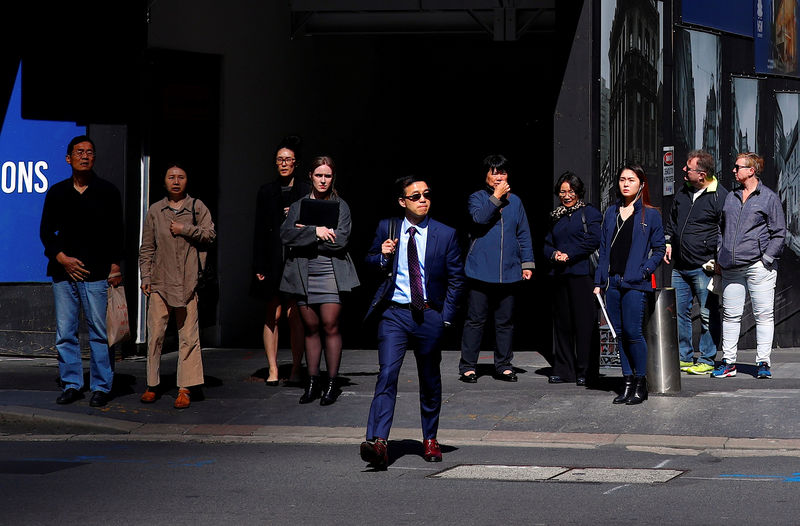By Wayne Cole
SYDNEY (Reuters) - Australian employment boasted another solid gain in September while the jobless rate dipped for the first time in seven months as fewer people went looking for work, a tentative hint of a much-needed tightening in the labor market.
The local dollar blipped up a quarter of a cent to $0.6783 after Thursday's data showed 14,700 net new jobs were added in September, matching forecasts. Full-time positions made up all the gains with a rise of 26,200.
That helped nudge the jobless rate down a tick to 5.2%, from a one-year peak of 5.3%, the first drop since February when it got as low as 4.9%.
The improvement will be welcome news to the Reserve Bank of Australia (RBA) which has sought to revive the economy by cutting interest rates three times this year to a record low of 0.75%.
Yet the jobless rate still remains well above the RBA's aspirational goal of 4.5%, and further declines would likely be needed to lessen the case for more stimulus.
RBA Deputy Governor Guy Debelle in a speech earlier on Thursday cautioned that a downturn in home building had been a larger drag on the economy and jobs than first expected and was set to get worse before it got better. [S9N23B02F]
"The RBA will breathe a sigh of relief after the unemployment rate dipped," said Marcel Thieliant, an economist at Capital Economics. "But employment surveys point to jobs growth slowing and we expect unemployment to reach 5.5% by early next year."
"We expect the RBA to cut interest rates to 0.5% in December."
The futures market implies around a 20% chance of a cut in November, rising to 60% by December.
SO MANY WORKERS
The RBA's own forecasts are for unemployment to be at 5% or higher right out to late-2021, a major reason the bank's board dismissed arguments against a move when it cut rates earlier this month.
"Members noted that the strong demand for labor had been met by an equally strong increase in supply," minutes of the meeting released this week showed.
"Almost all of the strength in employment growth over the preceding three years had been matched by higher participation, so there had been little progress on reducing unemployment."
Indeed, jobs growth ran at a rapid 2.5% in the year to September, well above the latest U.S. performance of 1.4%, yet participation was also near record peaks at 66.1%.
Add in those who wanted to work more hours, and the underutilization rate was a still-high 13.5%.
This phenomenon is partly the government's work. Policies to extend child care and disability payments have helped boost the share of females in the workforce to all-time peaks.

The conservative government of Prime Minister Scott Morrison has also kept the doors wide open to skilled migration, with net arrivals running at 300,000 in the year to August and almost matching the entire increase in net new jobs in Australia.